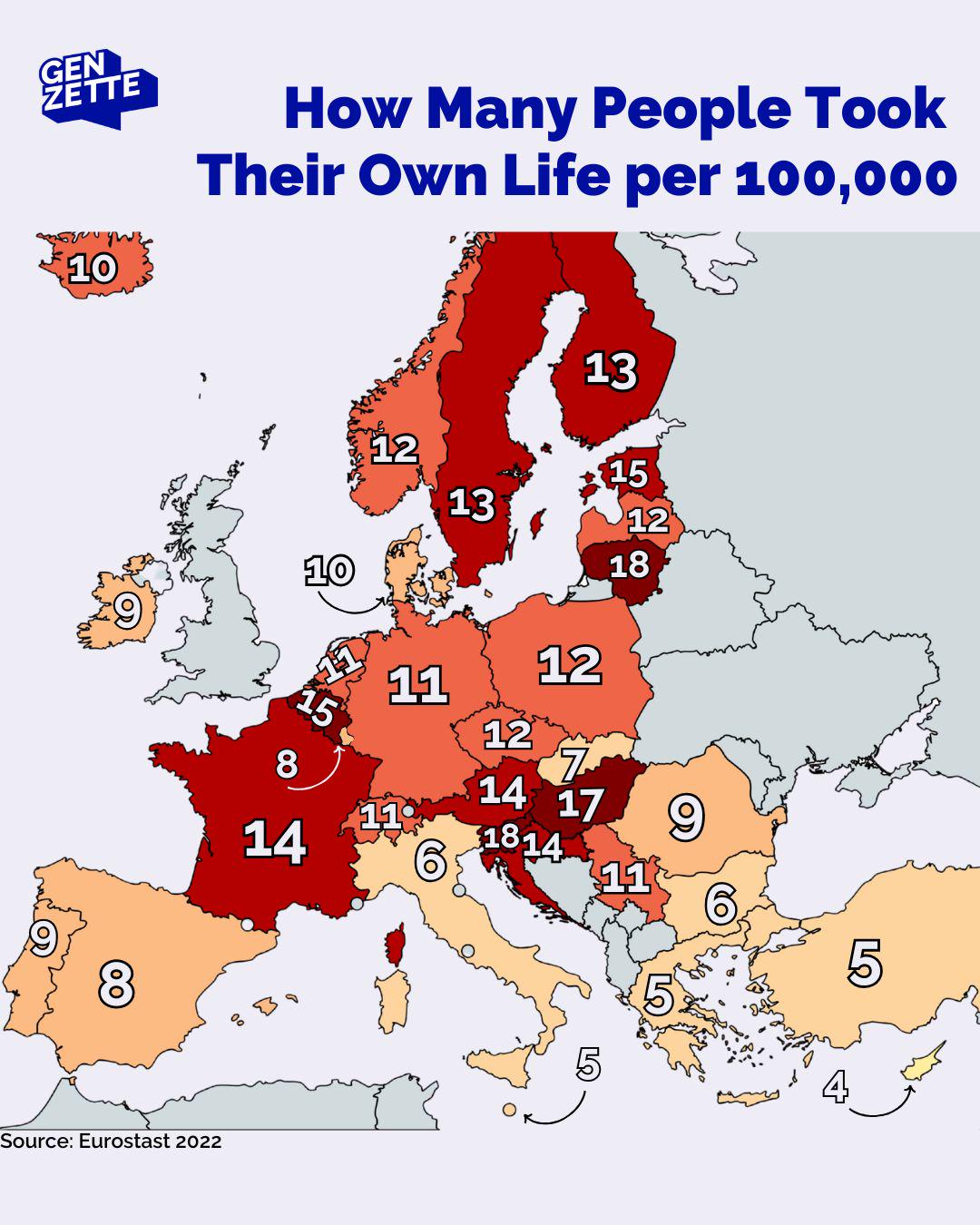Suicide Rate Map per 100,000 People


Alex Cartwright
Senior Cartographer & GIS Specialist
Alex Cartwright is a renowned cartographer and geographic information systems specialist with over 15 years of experience in spatial analysis and data...
Geographic Analysis
What This Map Shows
This map provides a stark visualization of the suicide rates across various countries, measured as the number of suicides per 100,000 people. As we delve into this sensitive yet critical topic, it is essential to grasp the underlying factors contributing to these rates, as they reflect not just individual tragedies but also broader societal issues.
Deep Dive into Suicide Rates
Suicide is a complex phenomenon influenced by a multitude of factors including mental health, socio-economic conditions, cultural attitudes, and access to mental health care. According to the World Health Organization, approximately 700,000 people die due to suicide every year, making it a significant public health issue globally. Interestingly, the rates of suicide can vary dramatically from one country to another, revealing insights into the social fabric and mental health support systems in those regions.
One of the critical aspects influencing suicide rates is mental health awareness. In countries where mental health is stigmatized, individuals may be less likely to seek help, leading to higher suicide rates. For instance, countries like South Korea and Japan have historically higher rates, partly due to cultural pressures and the stigma surrounding mental illness. Conversely, nations such as Sweden and Norway, which invest heavily in mental health services and have progressive attitudes towards discussing mental health, tend to have lower suicide rates.
Economic factors also play a significant role. Economic downturns, unemployment, and poverty can exacerbate feelings of hopelessness, leading to increased suicide rates. For example, during the financial crisis of 2008, many European countries experienced spikes in their suicide rates. Moreover, access to means of suicide, such as firearms or toxic substances, is a critical factor; countries with stricter gun control laws often report lower suicide rates.
What’s fascinating is that demographic factors, such as age and gender, also significantly influence suicide statistics. Globally, men are more likely to die by suicide than women, with the largest differences seen in older age groups. In contrast, women are more likely to attempt suicide, reflecting different coping mechanisms and societal roles. This discrepancy raises questions about gender expectations and mental health support tailored for different demographics.
Regional Analysis
Examining the map reveals stark contrasts between regions. For instance, Eastern Europe, particularly countries like Lithuania and Russia, report some of the highest suicide rates globally. These regions face unique challenges, including high levels of alcoholism, socio-economic instability, and limited access to mental health services.
In contrast, many countries in the Middle East and North Africa exhibit lower reported suicide rates. However, it’s important to consider that cultural factors, including societal views on suicide and significant underreporting, may skew these figures. Countries like Egypt and Saudi Arabia have cultural taboos surrounding suicide, which can lead to a lack of reliable data.
Interestingly, a noticeable trend in recent years is the rising rate of suicides among youths, particularly in developed nations. The United States has seen a troubling increase in suicide rates among teenagers, attributed to factors such as cyberbullying, social media pressures, and a general decline in mental health awareness among young people. This is a call to action for communities to foster supportive environments and open dialogues about mental health.
Significance and Impact
Understanding suicide rates is crucial for public health and policy-making. It sheds light on the effectiveness of mental health initiatives and societal attitudes toward mental wellness. Acknowledging the mental health crisis can serve as a catalyst for change, prompting governments and organizations to invest in mental health resources and destigmatize seeking help.
As we look toward the future, the mental health landscape is evolving. The COVID-19 pandemic has exacerbated mental health issues worldwide, leading to increased anxiety, depression, and, sadly, higher suicide rates in many regions. However, there is hope; many countries are recognizing the importance of mental health in overall well-being and are beginning to implement strategies to address these issues.
In conclusion, this map serves as a critical reminder of the urgent need for comprehensive mental health strategies and support systems that address the root causes of suicide. By fostering understanding, reducing stigma, and improving access to mental health care, we can work towards lowering these rates and supporting those in need.
Visualization Details
- Published
- October 19, 2025
- Views
- 6
Comments
Loading comments...